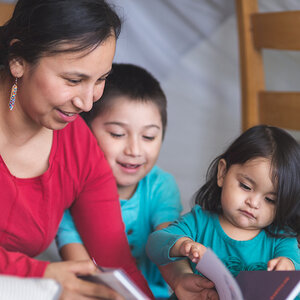Childhood Poverty Is Growing Epidemic, Policy Organization Warns
The National Center for Children in Poverty at Columbia University's Mailman School of Public Health has released new national figures and updated state demographic data that reveal millions of children of low-income parents living without basic necessities.
According to new data released by NCCP, childhood poverty is a nationwide epidemic that exists in suburban, rural, and urban areas and cuts across all races and ethnicities. More than half the 70 million children in the United States live in poor or low-income families, and a significant number of those households — some 14.7 million — have at least one parent who works full time. Moreover, even though the 2004 federal poverty level for a family of four is $18,850, NCCP research shows that families need to earn twice that amount to meet their most basic needs for food, clothing, shelter, health care, and child care.
In a press release on its Web site, the organization urges the Bush administration to recognize that any positive vision for the future must include the well-being of America's children. With nearly 10 million children under the age of six living in low-income families, the release adds, it is critical that children have the basic necessities in order to grow and contribute to American society in the future.
"Based on the [State of the Union] speech, President Bush seems unaware that America's future is in jeopardy because nearly one-fifth of our children are growing up in poverty," said NCCP executive director Jane Knitzer. "Even more alarming is that after a decade of decline, the proportion of children living in low-income families is rising again, a trend that began in 2000."
To read or download Basic Facts About Low-Income Children in the United States, a new report based on NCCP's findings, visit: http://www.nccp.org/pub_lic05.html.






